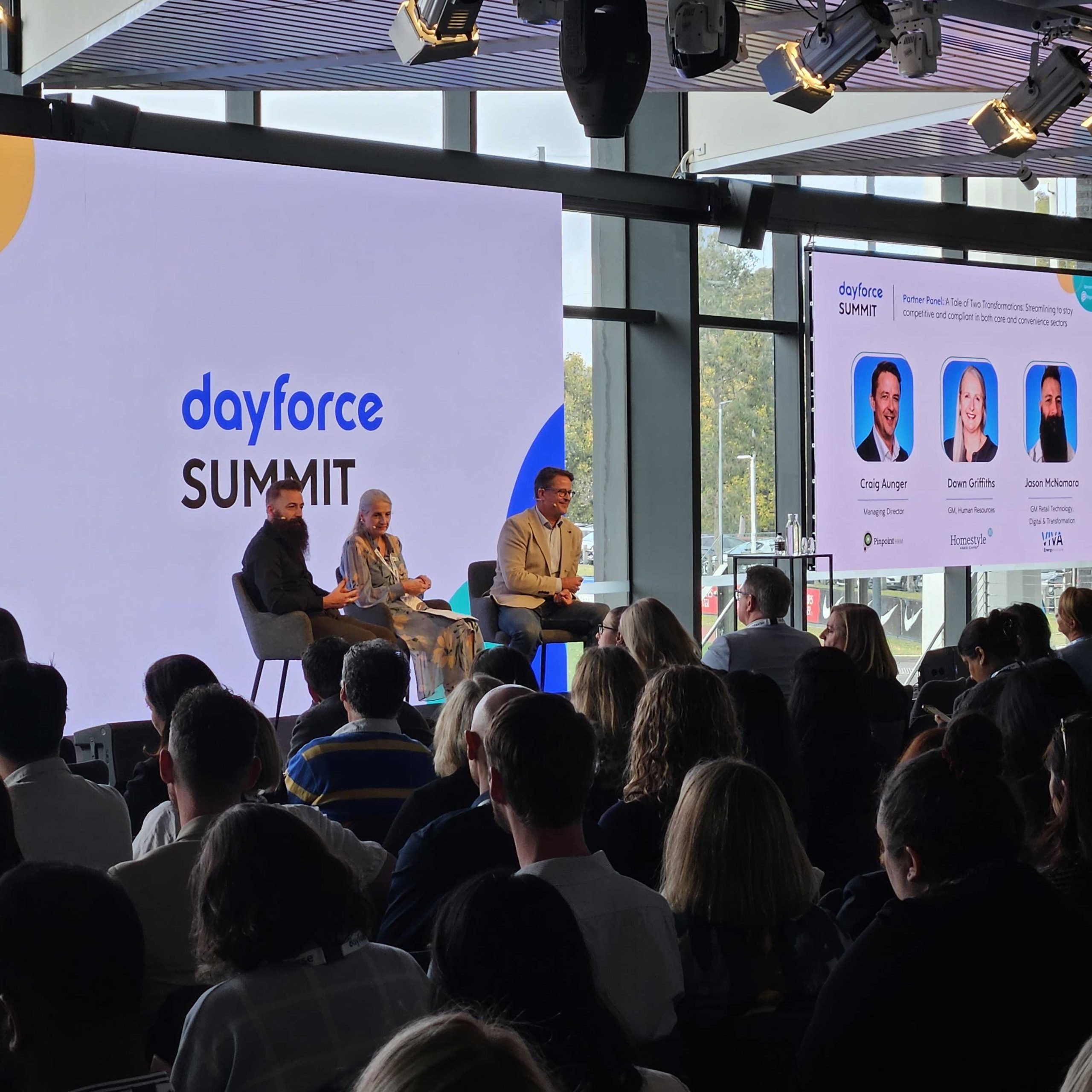Despite rising investment in Cloud HR solutions, research reveals more than half (57%) of HR technology leaders believe employees are underwhelmed by their organisation’s HR tech.
The fear of putting time, money and resources into initiatives that fail to deliver the anticipated benefits can be daunting for HR leaders. Often preventing projects from getting off the ground at all.
Having delivered over 650 HR tech projects in the past 19 years, we know that a well-considered plan is at the foundation of every successful project.
And it’s where you need to start.
5 Steps to HR Tech Success: How to Wow Your Execs
Collaboration with diverse stakeholders across the business on your plan is also vital – early on and throughout your project. Their input and buy-in can pave the way for aligning business strategy to HR tech strategy. Ensuring you find the best-fit solution to deliver a smoother transition and greater project success.
To win over executive stakeholders, you must demonstrate that you’ve done your homework by navigating and addressing five key questions:
- Why do we need it?
- What are we hoping to achieve and by when?
- How are we going to do it and what’s the realistic timeline?
- Who needs to be involved?
- How much is it all going to cost?
These questions may seem straightforward, but finding the real answers can be tricky. Your executives will be looking for you to give them the confidence that you have prepared your organisation appropriately.
At a minimum, your plan should cover these 5 key areas.
1. WHY? Articulating the business need
Gartner recently reported that for 46% of HR tech leaders, justifying HR tech investments ranked among their top three hurdles for 2023. Your first step towards justifying your project and gaining buy-in from your executive team is uncovering the business problems your initiative will address.
Start by examining the pain points and inefficiencies plaguing your company. Is it a lack of productivity? Ineffective processes? Lack of real-time data and insights? Inability to attract or retain top talent? Poor employee experience? Or a disengaged workforce?
Once you’ve identified these challenges, link them to broader business implications. Such as the impact on profitability, growth, or customer satisfaction. The closer these problems are to the executive’s priorities, the more they will get your proposed project’s urgency and potential value.
2. WHAT? Gaining clarity about the desired future state
Having a clear vision for the future state of your HR operations is pivotal in rallying your stakeholders and getting them on board. This vision should go beyond just the technical features and functions of the new system. Instead, it should paint a vivid picture of the future experience for your workforce and the positive business outcomes you’re aiming for.
For example, instead of focusing on automating HR processes, talk about how this will free up time for HR staff to focus on value-add and strategic tasks or how this will impact the employee experience. Or, instead of highlighting the analytics capabilities of the new system, explain how these insights will drive informed decision-making and business growth.
Focusing on these business outcomes will make a more compelling case for your new HR technology solution.
3. HOW? Identifying the best-fit solutions, project timelines, approaches
Before being swept away by the dazzling demos of countless HR tech vendors, we advise beginning with a comprehensive market scan.
There are many ways to do this, such as leveraging existing market research, talking with similar organisations, or enlisting the help of HR tech consultants. With their deep knowledge of the HR tech landscape, external experts can quickly navigate the market and help you narrow down the field.
As Josh Bersin pointed out recently, “The best HR Tech solutions come from companies who study the market, engage with [external] firms, and ask others what advanced systems are working. There simply is no alternative to really understanding the market…. If you don’t know the vendors well, simply issuing RFPs won’t get you to the right solution.”
Annette Young, Former Head of People and Culture at The Smith Family shared her experience, “We would not have been able to navigate the HR Tech vendor evaluation and selection process without Pinpoint. There was a lot of analysis involved and it was complex.”
Hundreds of vendors populate the HR tech market in the ANZ region, each with unique strengths and limitations. Establishing key selection criteria to differentiate between them will help refine your shortlist (ideally down to 2-3 vendors).
These include the ability to deliver on your project’s full scope; capacity to meet unique or complex requirements; fit with your organisation’s size; ability to address your business priorities; alignment with your maturity aspirations; compatibility with your budget.
Once you’ve curated a shortlist of vendors, it’s time to prepare a roadmap or high-level project plan outlining your approach. Are you considering a phased or a “big bang” approach? What are the key activities, and what does the realistic timeline look like? What do you need to prepare to get ready for the implementation and post go-live management of your solution?
This early roadmap will provide a clearer understanding of the journey ahead, and how it differs between your shortlisted vendors. You can then articulate this in your business case and communicate to key stakeholders before undertaking more detailed due diligence on your preferred vendors.
4. WHO? Defining what resources need to be involved and when
HR tech projects require people with the right skills at the right time. Your project team should include HR professionals, technical experts and business representatives from various departments. They will provide valuable insights and champion the project within their respective teams.
Creating a resource plan early in the project can help you identify these key individuals and determine when their involvement is needed. This plan should also consider the capacity and capability of your resources, as under-resourcing your project is the #1 pitfall that can jeopardise successful outcomes.
See related article: ‘Meet your Dream Team: 8 project roles that define Cloud HR Success’
5. TOTAL COST: Accurately estimating the total cost of ownership
Understanding and accurately estimating the total cost of ownership (TCO) is key to setting realistic budgets and expectations. The TCO includes not only vendor fees but also costs for your resources throughout the expected lifetime of the HR technology solution.
This involves considerations before, during, and after the implementation. For instance, you will need to account for costs related to process re-engineering, data preparation, integrations, training, testing, and change management. Along with post go-live costs associated with ongoing support and optimisation of the system and integrations.
It’s essential to present this comprehensive cost view to your stakeholders. This transparency will help you gain their trust and avoid any unpleasant surprises down the line. Addressing these costs at the outset ensures that your project is fully funded for the long haul.
Next Steps: laying down the plan
Once you have clear answers to these questions, lay them out in a detailed plan that creates the foundation for your business case. You can then socialise the plan with your key stakeholders and decision-makers.
Investing time and resources upfront in planning your HR transformation project will bring many benefits. Including avoiding some of the issues post go-live which can often trace back to gaps in these early stages of HR tech projects.
As you embark on this exciting journey, remember that you’re not alone – leverage the experience of those who’ve travelled this path before and use that knowledge to guide your own journey.
Need help with your HR tech project or looking to get more from your current solution? Contact our HR tech experts today.
References:
Gartner: HR Technology Planning Imperatives for 2023 and Beyond
https://joshbersin.com/2023/01/hr-technology-for-2023-whats-hot-whats-not/
About the Author




